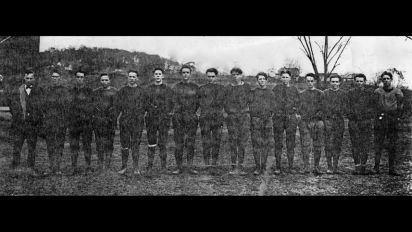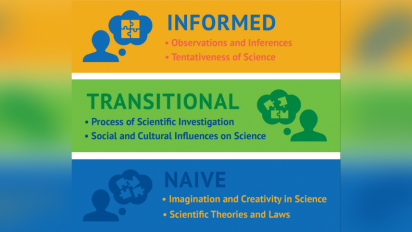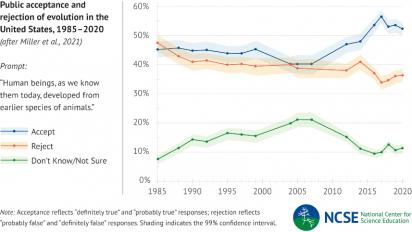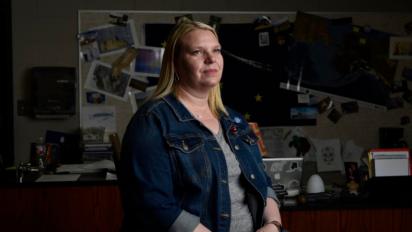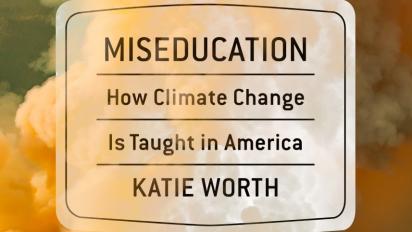In Miseducation, Katie Worth tells an infuriating, well-researched, and engaging story about how climate change is taught—and how the teaching of climate change is and has been hampered — in American public schools. It’s an excellent primer about those who have worked to prevent good climate science from being taught in our schools, and how they went about their dastardly work. The author is a former investigative journalist for PBS’s Frontline, and the book is in the same vein of careful and hard-hitting journalism. While there is more to the story than the work of bad actors, understanding their roles is essential to the vital work of improving climate change education.
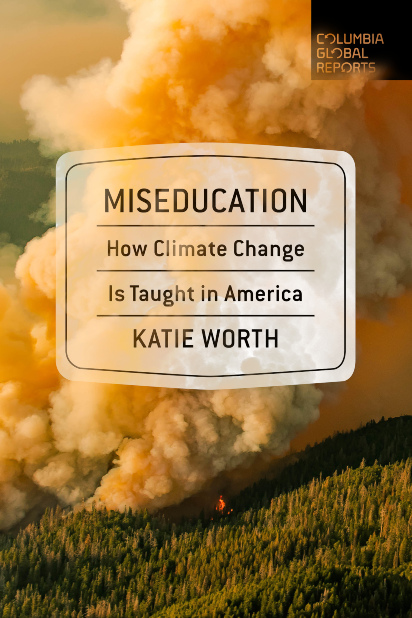 Attention is given to the geography of climate change education. The opening image of the book is a US map showing the grades each state received in “Making the Grade?” — the 2020 report from NCSE and the Texas Freedom Network Education Fund — for the treatment of climate change in their state science standards, along with which political party controls each states’ state legislature. Blue states are more likely to address climate change accurately in their state standards than red states.
Attention is given to the geography of climate change education. The opening image of the book is a US map showing the grades each state received in “Making the Grade?” — the 2020 report from NCSE and the Texas Freedom Network Education Fund — for the treatment of climate change in their state science standards, along with which political party controls each states’ state legislature. Blue states are more likely to address climate change accurately in their state standards than red states.
But geographic differences can also be hyperlocal, with students learning about climate change with fidelity to the science in their science classes and then walking down the hall to hear the science refuted in their social studies classes. Unfortunately, it is not especially rare for science teachers to portray the science as unsettled or worse. This is unsurprising, since American teachers hold a range of beliefs on cli- mate change, like Americans generally.
Miseducation’s stories of the marriage of those who oppose the teaching of evolution to those who opposed the teaching of climate change and of how Texas became a dominant force in the shaping of textbooks are detailed and well-told, but the section of the book I found most gripping involved the National Science Teaching Association and those who tried, with some success, to have NSTA downplay and misdirect teachers and students on the science of climate change. Much attention is given to a 1998 meeting at the American Petroleum Institute’s Washington DC headquarters and a subsequent eight-page memo suggesting, among other things, the formation of a “Science Education Task Group” that would specifically target NSTA. It’s unclear whether that group actually formed, but with collaborations between NSTA and the likes of ExxonMobil, Shell, and ConocoPhillips on some curriculum materials development and millions of dollars in sponsorship, the goals of the effort seemed to be achieved — for a time.
I have a personal connection. While doing National Science Foundation-funded outreach and education about hydraulic fracturing (fracking), my col- leagues and I submitted NSTA workshop proposals on fracking that were rejected in 2013, 2014, and 2015. One of the highest-profile environmental issues in those years, fracking did not appear in any substantial way in the conference programs. At the same time, energy companies were among NSTA’s most prominent corporate sponsors. We could not help but wonder whether there was a connection, though I suspect the rejections were due more to reviewers’ worries than to any formal policy.
Eventually NSTA came around. In 2016, a workshop proposal on fracking was accepted, and in 2018, a panel, led by Eric Pyle, now NSTA’s president, and including me, crafted NSTA’s 2018 statement on the teaching of climate science. Though 2018 was disturbingly late for the issuing of such a position statement, NSTA’s support for high-quality climate change education materials and professional development is now solid, abundantly clear, and remarkably extensive. Erika Shugart, NSTA’s relatively new executive director, told Worth, “NSTA supports quality science education and we fully embrace the teaching of climate science and climate change. ... [I]f the science in our resources is not accurate, then we correct it” (page 137).
While I do highly recommend the book, there are at least two important parts of the story missing — the mismatch between state science standards and state-level assessments, and the neglect of Earth sciences in American secondary education. These reflect profound challenges of making substantial changes to school curriculum and school structure.
First, standards and assessments often differ in focus. For example, New York received an A- in “Making the Grade?” for its state science standards, officially adopted in 2017. These standards hew closely to the Next Generation Science Standards and earned their high mark because of that. But, as I write this review in November 2021, New York students are still preparing to be tested on the content of the 1999 Earth Science Core Curriculum Guide, which is based on the last set of standards adopted by the state in 1996. The first assessments based on the 2017 standards will not be administered until June 2025.
Second, high school Earth science courses, the most obvious place for climate change content, aren’t expected for the majority of American high school students. (New York is a rare exception.) The NGSS place earth and space science at the same level as life science and physical science at the high school level. But so did the 1996 National Science Education Standards, which did little to bring quality Earth science education to America’s high schools. Biology, chemistry, and physics have dominated the high school science curriculum for more than a century in this country, and it is not clear that this is about to change.
These problems are compounded by the mismatch between climate change’s highly interdisciplinary nature and the highly disciplinary nature of schooling, especially from grades 6 to 16. As a result, it’s easy to ignore climate change within the formal education system without much consequence. The consequences of ignoring climate change, of course, are becoming increasingly difficult to ignore. Miseducation reveals some of the key difficulties we face as we work to build understandings of the climate and climate change for students and their teachers. If you care about the state of climate education, read this book.
This version might differ slightly from the print publication.


